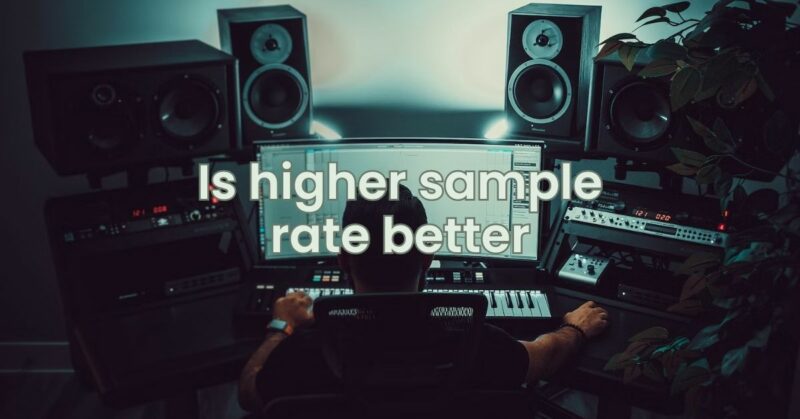The quest for better audio quality has led to ongoing debates within the realm of digital audio, and one hotly contested topic is whether a higher sample rate is inherently superior. Sample rate, which measures the number of audio samples taken per second during analog-to-digital conversion, plays a significant role in audio fidelity. In this article, we explore the advantages and limitations of higher sample rates and whether they truly deliver a perceptible improvement in audio quality.
Understanding Sample Rate:
Sample rate, expressed in Hertz (Hz), defines how many audio samples are captured per second to represent the analog audio signal digitally. Common sample rates include 44.1 kHz (CD-quality), 48 kHz (common for video and audio production), 96 kHz, and even higher rates like 192 kHz.
Advantages of Higher Sample Rates:
- Improved Accuracy in High-Frequency Content:
Higher sample rates can capture more high-frequency content and transient details in the audio waveform. This increased precision can be particularly advantageous for recording and reproducing audio with intricate high-frequency elements, such as cymbals, violins, or high-pitched vocals.
- Reduced Aliasing:
Aliasing is an audio distortion phenomenon that occurs when high-frequency content is improperly represented in the digital domain. Higher sample rates can help reduce aliasing effects and minimize audio artifacts in the audible range.
- Beneficial in Signal Processing:
In certain audio processing scenarios, such as pitch shifting or time-stretching, higher sample rates can offer better results. When manipulating audio at higher resolutions, there is less loss of quality during the processing, resulting in more accurate and natural-sounding audio.
Limitations of Higher Sample Rates:
- Audibility and Perception:
The debate about higher sample rates hinges on whether the human ear can perceive the improvements offered by such high resolutions. While some audiophiles and professionals claim to discern a difference in audio quality, the majority of listeners may not notice any substantial improvement, especially when using standard consumer playback equipment.
- Increased File Size:
Higher sample rates result in larger audio files, consuming more storage space and requiring greater bandwidth for streaming. This can be impractical for portable music players and online platforms, where file size and bandwidth considerations are crucial.
- Processing Demands:
Working with higher sample rates can place greater demands on the processing power of audio devices and computers. This can lead to increased CPU usage, affecting real-time audio performance and potentially limiting the number of simultaneous audio tracks in a recording session.
The Human Hearing Limitation:
The human hearing range is generally accepted to be between 20 Hz and 20 kHz. While some individuals may have extended or reduced hearing capabilities, it is widely acknowledged that most listeners cannot perceive audio frequencies beyond this range. As a result, the benefits of extremely high sample rates, such as 192 kHz, might be lost on the average listener.
Conclusion:
The question of whether higher sample rates are better in digital audio remains a subject of ongoing debate. While higher sample rates can offer advantages in capturing and processing high-frequency content, their perceptible benefits to the average listener are still a point of contention. Additionally, the trade-offs in terms of increased file size, processing demands, and practicality for consumer playback raise valid considerations.
Ultimately, the decision to use higher sample rates should be based on individual needs, priorities, and the specific requirements of audio production or playback. For professional audio applications, where every nuance counts, higher sample rates may be justified. However, for the average consumer, standard sample rates like 44.1 kHz or 48 kHz remain more than sufficient for an enjoyable and immersive listening experience.


